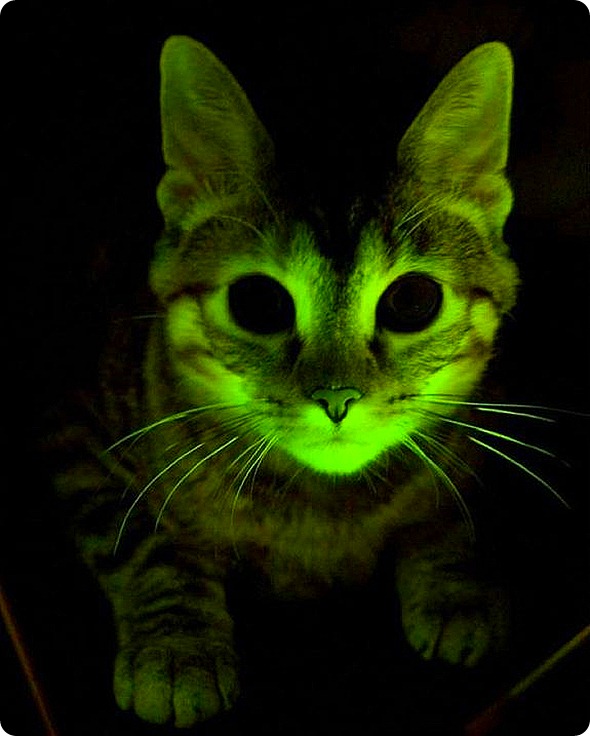U.S. researcher Eric Poeschla has produced three glowing genetically modified cats by using a virus to carry a gene, called green fluorescent protein (GFP), into the eggs from which the animals eventually grew. This method of genetic modification is simpler and more efficient than traditional cloning techniques, and results in fewer animals being needed in the process.
 The GFP gene, which has its origins in jellyfish, expresses proteins that fluoresce when illuminated with certain frequencies of light. Poeschla, of the Mayo Clinic in Rochester, Minnesota, reported his results in the journal Nature Methods.
The GFP gene, which has its origins in jellyfish, expresses proteins that fluoresce when illuminated with certain frequencies of light. Poeschla, of the Mayo Clinic in Rochester, Minnesota, reported his results in the journal Nature Methods.
The development and refinement of the GFP technique earned its scientific pioneers the Nobel prize for chemistry in 2008. In the case of the glowing cats, the scientists hope to use the GM animals in the study of HIV/AIDS.
“Cats are susceptible to feline immunodeficiency virus [FIV], a close relative of HIV, the cause of AIDS,” said professors Helen Sang and Bruce Whitelaw of the Roslin Institute at the University of Edinburgh. “The application of the new technology suggested in this paper is to develop the use of genetically-modified cats for the study of FIV, providing valuable information for the study of AIDS. This is potentially valuable but the uses of genetically modified cats as models for human diseases are likely to be limited and only justified if other models – for example in more commonly used laboratory animals, like mice and rats – are not suitable,” they said.
Dr Robin Lovell-Badge, head of developmental genetics at the Medical Research Council's national institute for medical research, said, “Cats are one of the few animal species that are normally susceptible to such viruses, and indeed they are subject to a pandemic, with symptoms as devastating to cats as they are to humans. Understanding how to confer resistance is … of equal importance to cat health and human health.”